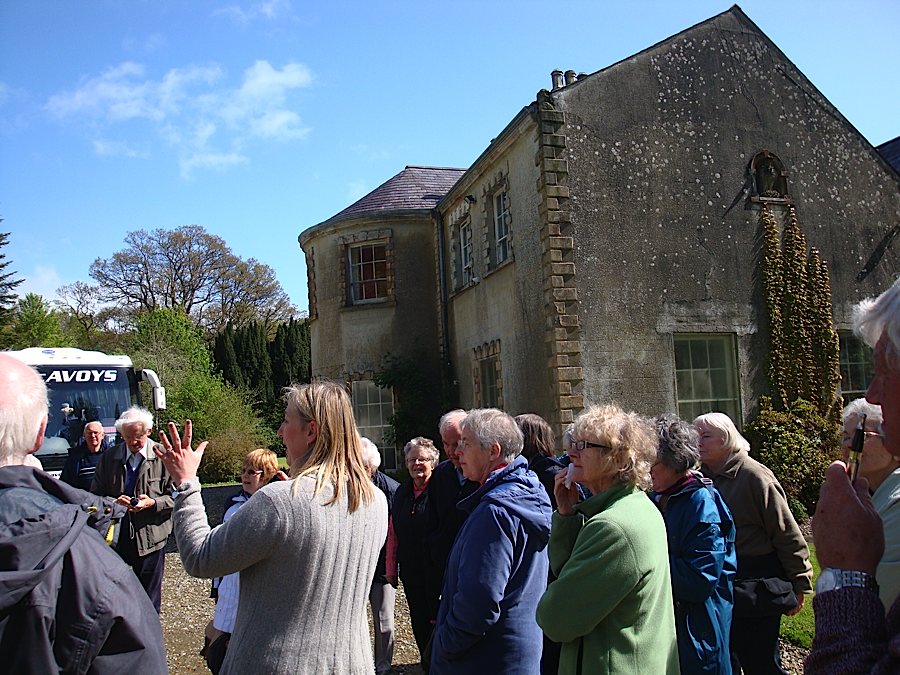
The first stop was at Ashbrook House, near Londonderry, where morning tea was followed by an interesting tour of some of the ground floor rooms. The estate has remained in the possession of the Ash family and their descendants since the late sixteenth century, when it was granted to Thomas Ash by Elizabeth I for his role in quashing the O’Neill rebellion. The Ash family came from south-west England and later intermarried with the Beresfords. They were one of four families in this area recorded as ‘native Irish’ at the time of the plantation. Captain Thomas Ash was present in Londonderry during the siege in 1689 and compiled a famous diary. Part of the original house remains, but more rooms were added in the eighteenth and nineteenth centuries. During the Second World War US marines were stationed nearby and General George Marshall visited the house.
Our next stop was at Dunmore House, at the village of Carrigans in Donegal. The Harvey family built the first house on the site in the early seventeenth century. It later passed by marriage to the McClintock family in 1685. The house was burnt by retreating Jacobite forces in 1689. It was rebuilt in 1709 and further changes were made in the mid eighteenth and nineteenth centuries.
The McClintock family died out following a tragedy in 1938. Colonel McClintock’s only son William was paralysed following a riding accident. He was often taken to the walled garden in fine weather and it was here he was shot by his mother, who then killed herself. He was due to marry and when his fiancé learned of the tragedy she shot herself. All three were buried in the Church of Ireland graveyard in the village. The Colonel died in 1943 and the estate was sold. In 1954 it was purchased by the McFarland family and the current owner is Sir John McFarland.
After having our packed lunches we were able to view the lovely gardens. The gardener told us the story of one of the sundials and its connection to the McClintock tragedy. We then returned to the house for a short talk by Lady McFarland and the opportunity to view some of the rooms.
We were then joined by a guide from the Monreagh Ulster-Scots centre who told us about the area known as The Laggan as we travelled towards Raphoe. It was an important area for flax growing. At Raphoe we stopped and visited the Church of Ireland Cathedral. This is named after St. Eunan, a relation of St. Columba and ninth abbot of Iona. Part of the present building dates back to the 12th century, but most was built at various times between the seventeenth and nineteenth centuries. The wooden benches of the consistory court remain in place just before entry into the nave. We were able to enjoy the singing of a visiting choir which was rehearsing for a performance.
Our final stop was at the Monreagh Ulster-Scots centre which is housed in the former manse. After tea and scones we were able to view the displays in the house and visit Monreagh Presbyterian Church nearby. The congregation was formed in 1645 and the present building dates from the eighteenth century. We then returned to Bangor after a most enjoyable trip.
